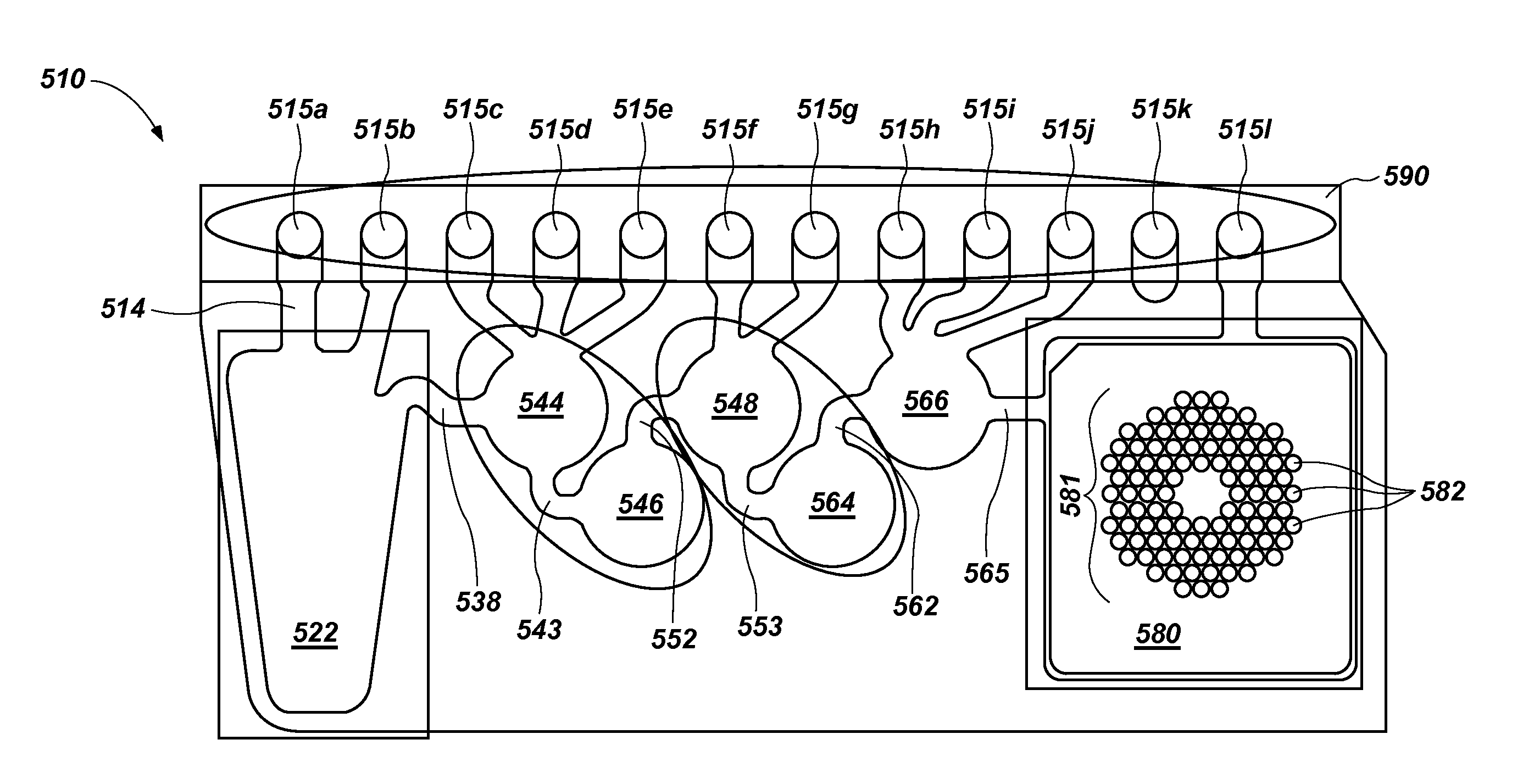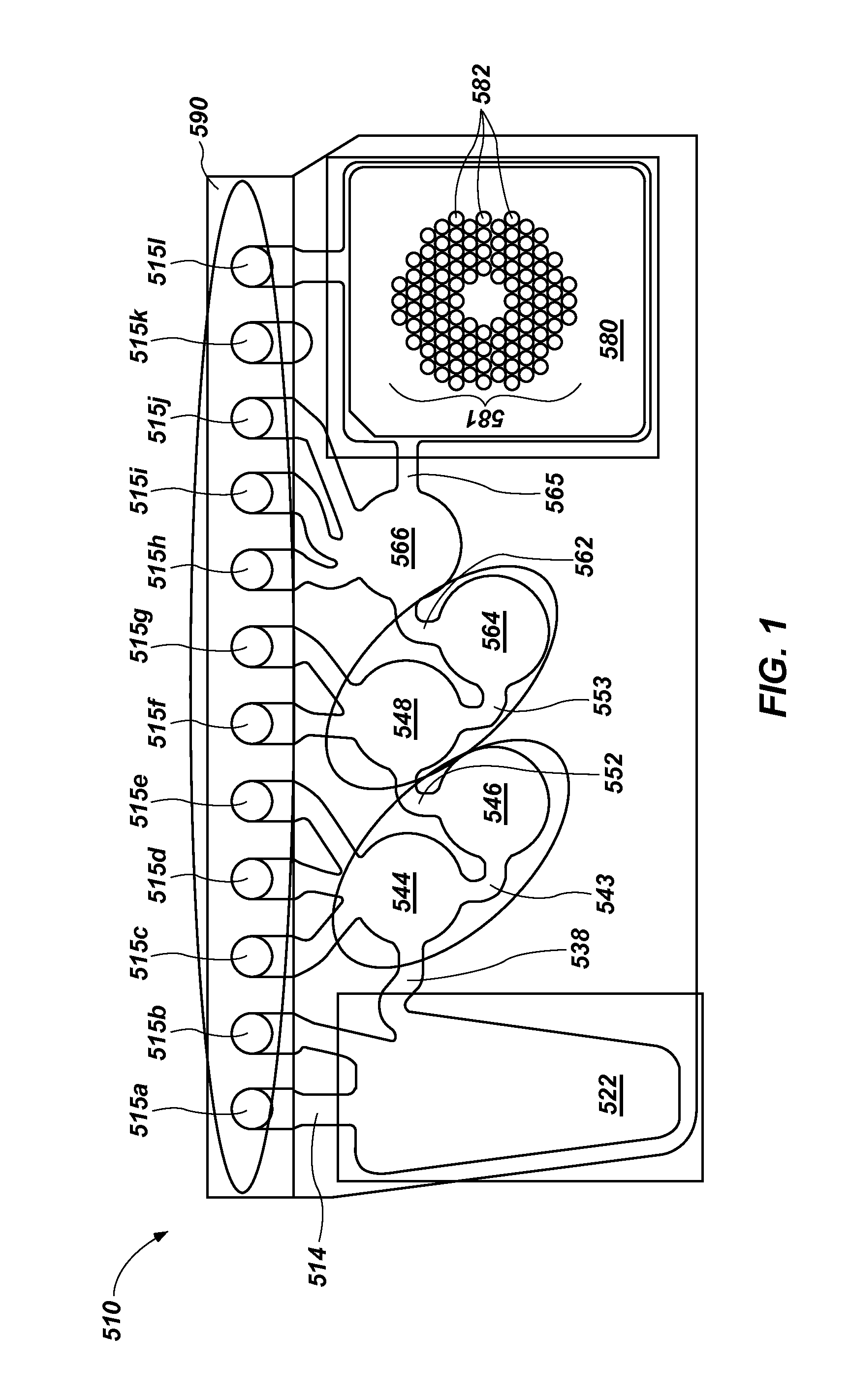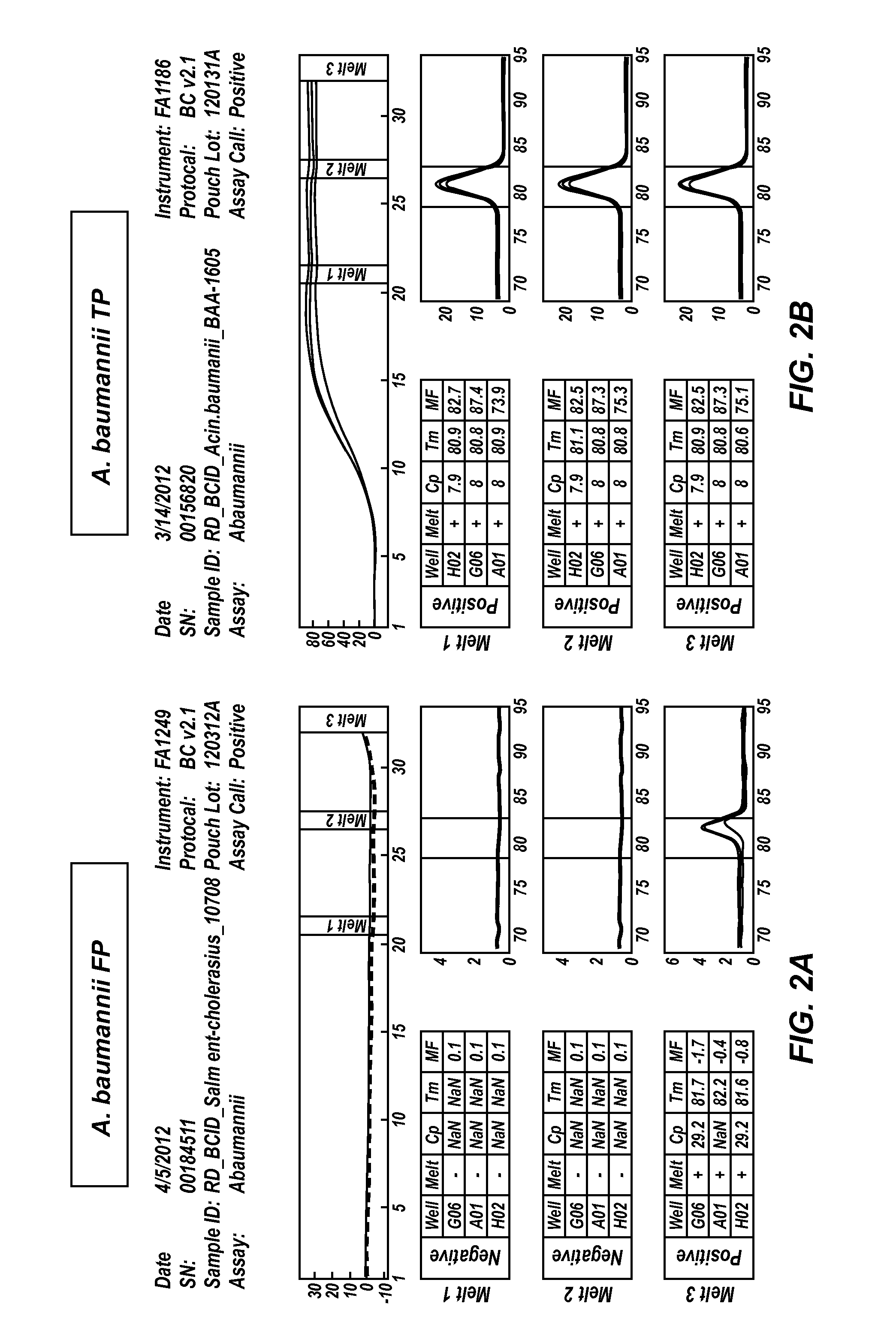Multiple amplification cycle detection
- Summary
- Abstract
- Description
- Claims
- Application Information
AI Technical Summary
Benefits of technology
Problems solved by technology
Method used
Image
Examples
example 1
[0058]The FilmArray Blood Culture Identification (BCID) system is designed to provide rapid identification of a broad range of microorganism pathogens directly from blood culture. The illustrative BCID panel detects the most common bacteria and yeast isolated from positive aerobic blood cultures (PABC), as well as select antibiotic resistance genes, with ≧95% sensitivity. A commercial BCID panel is available from BioFire Diagnostics, Inc. This example uses a research version of the FilmArray BCID panel to demonstrate methods of distinguishing between true positives and environmental contamination.
[0059]Various gram-positive and gram-negative bacteria, as well as Candida yeast isolates were tested for assay reactivity. Mock PABC samples were prepared by spiking microorganism into a mixture of human whole blood and BD BACTEC Aerobic Plus / F blood culture medium. Microorganisms were spiked at concentrations consistent with that observed for blood culture bottles that had recently been i...
example 2
[0072]In Example 1, melts at different cycle numbers were used to distinguish between environmental contamination and clinical infection, wherein each test in the panel was assigned a cycle number, and positives and negatives were called based on the result at the assigned cycle number. Using different cycle numbers for calls can also be used to distinguish between potential “false positives” where nucleic acid is present at substantial quantities but not clinically relevant and clinically relevant true positives that do not have a crossing point until a later cycle. One such example is with latent viral infection through chromosomal integration, wherein the chromosomally integrated viral DNA may or may not be responsible for the clinical symptoms.
[0073]For example, an individual may have inherited the HHV6 virus from a parent who had been infected with the virus and the virus was latently chromosomally integrated (termed chromosomally-integrated HHV6, “ciHHV6”). This individual wou...
example 3
[0075]In Examples 1 and 2, different cycle numbers were used to distinguish between environmental contamination, potentially non-clinically relevant infection, and clinically-relevant infection. In this example, additional cycles are used to enable detection of low level true positives. In this method, the detection and identification method is a modified two-step process. The first step is a set amplification protocol, optionally with additional melt cycles as used in Examples 1 and 2, and the second step employs a higher signal-to-noise detection during at least one subsequent melt. An illustrative protocol is shown in FIG. 5.
[0076]As shown in FIG. 5, a set number of amplification cycles, illustratively 26 cycles, are run. Any wells that return a positive result at cycle 26 optionally need not be analyzed further. The positive result may be made by amplification curve, or may be made or confirmed by a melt curve analysis as discussed above, for those samples that show amplificatio...
PUM
| Property | Measurement | Unit |
|---|---|---|
| Temperature | aaaaa | aaaaa |
| Power | aaaaa | aaaaa |
| Concentration | aaaaa | aaaaa |
Abstract
Description
Claims
Application Information
 Login to View More
Login to View More - R&D
- Intellectual Property
- Life Sciences
- Materials
- Tech Scout
- Unparalleled Data Quality
- Higher Quality Content
- 60% Fewer Hallucinations
Browse by: Latest US Patents, China's latest patents, Technical Efficacy Thesaurus, Application Domain, Technology Topic, Popular Technical Reports.
© 2025 PatSnap. All rights reserved.Legal|Privacy policy|Modern Slavery Act Transparency Statement|Sitemap|About US| Contact US: help@patsnap.com



